Developing a restaurant loyalty program can be a game-changer for building customer retention and driving repeat business.
A well-designed loyalty program rewards your regular customers, encourages them to visit more often, and fosters brand loyalty.
In this guide, we’ll explore the essential steps to create an effective restaurant loyalty program that not only enhances customer satisfaction but also boosts your bottom line.
Steps to Develop a Successful Loyalty Program
- Understanding the Importance of Loyalty Programs
- Identifying Your Target Audience
- Choosing the Type of Loyalty Program
- Setting Clear Objectives
- Choosing the Right Rewards
- Implementing Digital Loyalty Solutions
1. Understanding the Importance of Loyalty Programs
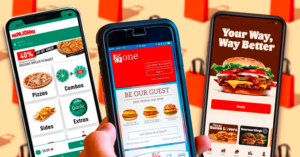
How Loyalty Programs Drive Customer Retention
Customer loyalty is a crucial driver of success in the restaurant industry.
Loyalty programs encourage repeat visits by providing customers with tangible rewards for their patronage, fostering a sense of connection and value.
When customers feel appreciated, they are more likely to return and become regulars, leading to increased revenue over time.
Loyalty programs also create a psychological incentive for customers to choose your restaurant over competitors, knowing that they are working towards rewards with each visit.
Statistics on the Benefits of Loyalty Programs in the Restaurant Industry
Research consistently shows that customer loyalty programs can significantly improve a restaurant’s performance.
- Repeat customers spend more: Studies show that a loyal customer spends 67% more than new customers.
- Increased customer lifetime value (CLV): Loyal customers tend to visit more often, leading to a higher CLV. In fact, data suggests that loyal customers are worth up to 10 times their initial purchase.
- Improved retention rates: According to the National Restaurant Association, customer retention can be boosted by 25-95% with an effective loyalty program.
The Competitive Loyalty Programs
Customers are often influenced by where they can maximise value, and loyalty programs are a direct way to offer that.
For instance, in highly competitive urban areas, restaurants that implement loyalty programs report an increase in customer retention and even new customer acquisition through word-of-mouth.
Additionally, loyalty programs provide a way to gather valuable customer data—such as ordering habits and preferences—which can be used to refine marketing efforts and create more personalised experiences.
2. Identifying Your Target Audience
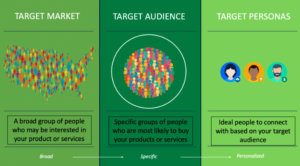
Importance of Understanding Your Customer Base
To create a successful restaurant loyalty program, you’ll need to understand your customer base.
Knowing who your regulars are, what they like to order, how often they visit, and what incentivises them to return is the foundation of a successful loyalty program.
By analysing data like transaction history, demographic information, and feedback, you can craft a loyalty program that resonates with your audience and provides meaningful rewards.
Segmenting Customers to Tailor Rewards and Offers
Not all customers visit your restaurant with the same frequency, and not all are motivated by the same types of rewards.
By segmenting your customers into distinct groups—such as frequent diners or occasional visitors—you can offer rewards and incentives that appeal to each segment specifically. For example:
- Frequent diners may value free meals, exclusive menu items, or invitations to VIP events.
- Casual visitors might appreciate discounts or perks that incentivise them to visit more often, such as a 20% off coupon after their third visit.
This targeted approach can improve customer satisfaction and participation, as customers feel they are receiving rewards that truly match their loyalty and spending habits.
Differentiating Rewards for Frequent Diners vs. Casual Visitors
Offering the same rewards to both groups may lead to disengagement from one segment or over-rewarding another.
For frequent diners, offering something special like a free entrée or access to an exclusive menu item after a certain number of visits may be a great way to maintain their loyalty.
On the other hand, casual visitors may need smaller, more immediate incentives to encourage them to visit more frequently—such as a discount on their next meal after their second visit in a month.
This distinction allows you to keep both groups engaged without overextending rewards for those who already frequent your establishment, while also encouraging occasional diners to become regulars.
3. Types of Restaurant Loyalty Programs
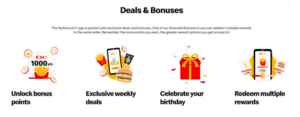
Selecting the right structure for your restaurant loyalty program depends on your goals and customer behaviour.
Here are four common types of programs, each offering distinct ways to engage and reward customers:
Points-Based Programs
Points-based loyalty programs are among the most popular in the restaurant industry.
Customers earn points based on their spending—typically, every dollar spent equals a certain number of points. These points can later be redeemed for rewards, such as discounts or free menu items.
- How it works: A customer might earn 1 point for every £1 spent, and after accumulating 100 points, they can redeem them for a free appetiser or drink.
- Why it works: This structure motivates customers to spend more to accumulate points and encourages frequent visits. It’s simple and provides flexibility for customers regarding how to redeem their points.
- Example: Starbucks Rewards is a widely recognised points-based program, allowing customers to earn stars that can be redeemed for free drinks or food.
Tiered Programs
Tiered loyalty programs offer customers increasing rewards as they reach higher spending or visit thresholds.
These programs create a sense of progression, as customers progressively unlock more valuable perks.
- How it works: A restaurant might have three tiers: Bronze (0-10 visits), Silver (11-25 visits), and Gold (25+ visits). As customers move up tiers, they receive better rewards.
- Why it works: Tiered programs tap into customers’ desire for status and recognition. They’re effective because they create a long-term engagement strategy, rewarding customers more for their loyalty over time.
- Example: Panera Bread’s loyalty program offers different rewards based on spending levels, with higher-tier members enjoying perks like free delivery and exclusive menu items.
Visit-Based Programs
Visit-based loyalty programs are straightforward and focus on rewarding customers for their repeat business, regardless of how much they spend per visit.
After a set number of visits, customers receive a reward.
- How it works: A typical program might offer a free item after every 5th or 10th visit. For example, “Buy 9 meals, get the 10th one free.”
- Why it works: Visit-based programs are easy to implement and are particularly effective for restaurants with consistent foot traffic and lower price points.
- Example: Many quick-service restaurants, such as Subway, use visit-based punch cards that reward customers after a certain number of purchases.
VIP or Exclusive Programs
VIP or exclusive loyalty programs are designed for your most valuable customers.
These offer premium perks that regular customers do not have access to, creating a sense of exclusivity.
- How it works: VIP members might receive benefits like priority seating, personalised service, access to exclusive events, or special menu items.
- Why it works: Exclusive programs appeal to your top-tier customers by making them feel valued and recognised. Offering experiences that go beyond discounts—such as personalised service or behind-the-scenes access—strengthens their loyalty and engagement.
- Example: Some fine dining establishments offer membership-based VIP programs that grant diners priority booking during busy seasons and invitations to chef’s table events or wine tastings.
4. Setting Clear Objectives
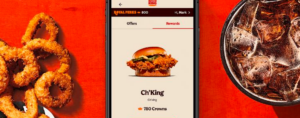
Before launching a restaurant loyalty program, it’s essential to define clear, measurable objectives that align with both your business goals and customer preferences.
This way, you can track the success of your program and make adjustments as needed.
Defining What You Want to Achieve
The goals of a loyalty program can vary depending on the type of restaurant, customer base, and market conditions.
Common objectives for a restaurant loyalty program include:
- Increase foot traffic: Encourage more frequent visits from existing customers and attract new ones. This can be particularly valuable for restaurants looking to boost off-peak hours or counter seasonality dips.
- Example: Offer time-limited rewards, like a free drink during happy hour after a certain number of visits, to drive foot traffic during slower times.
- Boost average check size: A well-designed loyalty program can encourage customers to spend more per visit. For instance, offering extra points for purchasing certain menu items or reaching a spending threshold can help increase average order values.
- Example: “Earn double points when you spend over £20 on your next visit,” or a free dessert when a customer orders a multi-course meal.
- Enhance customer retention: Retaining loyal customers is more cost-effective than constantly acquiring new ones. A successful loyalty program fosters long-term relationships and keeps your customers coming back.
- Example: Offering a “surprise and delight” bonus, such as a free birthday meal, can create emotional connections and enhance retention.
- Promote specific menu items or new offerings: A loyalty program can be a great way to introduce customers to new dishes or beverages. By offering bonus rewards for trying these new items, you not only drive sales but also encourage customers to explore your menu.
- Example: “Earn triple points when you try our new seasonal dish.”
- Collect customer data: Many loyalty programs help gather valuable customer data, such as favourite dishes, average spend, and visit frequency. This information can inform marketing strategies, menu development, and overall customer experience enhancements.
- Example: Use data gathered from loyalty programs to send personalised offers to specific customer segments, such as discounts on items they frequently order.
Aligning Objectives with Customer Preferences and Business Goals
A mismatch between what you want to achieve and what your customers value can result in disengagement or frustration.
- Understand customer preferences: Leverage data and feedback to understand what drives your customers. Do they value discounts, exclusive experiences, or free menu items?
- Example: If your customer base consists primarily of frequent lunch-goers, offering free lunch items after a certain number of visits may be more effective than a discount on a high-end dinner experience.
- Balance short-term promotions with long-term goals: While promotions like “double points day” can drive immediate traffic, ensure that your loyalty program supports sustained engagement. Your overall strategy should balance quick wins with ongoing rewards that reinforce customer loyalty over time.
- Example: While a time-limited promotion may drive immediate traffic, maintaining a core loyalty structure that consistently rewards customers for spending and visiting will help sustain long-term engagement.
- Focus on profitability: Ensure that the rewards you offer are profitable for your business. A loyalty program should increase customer lifetime value without drastically cutting into your margins.
- Example: If offering a free meal is too costly, consider offering lower-cost rewards like exclusive access to events or small add-ons like a free coffee or dessert.
5. Choosing the Right Rewards
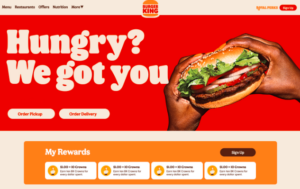
Selecting the right rewards is one of the most critical aspects of designing a successful restaurant loyalty program.
The rewards should resonate with your customers and incentivise them to return, but they must also be structured in a way that maintains your restaurant’s profitability.
Types of Rewards That Resonate with Your Customers
The rewards you offer should be attractive and meaningful to your customer base.
These are a few common reward types that tend to work well in restaurant loyalty programs:
- Free Items: Offering a complimentary item, such as a free appetiser, dessert, or drink, is a classic way to reward loyal customers.
- Discounts: Percentage-based or flat-rate discounts, such as 10% off the next purchase or £5 off after spending £50, can encourage customers to return for their next meal.
- Exclusive Experiences: Offering VIP experiences, such as a chef’s table, a private tasting, or early access to new menu items, can provide an experience that goes beyond financial value.
- Surprise Rewards: Surprising customers with unexpected rewards, such as a free meal on their birthday, can create a memorable experience and foster emotional loyalty.
- Points for Perks: Allowing customers to accumulate points that can be redeemed for a variety of perks gives flexibility and lets customers choose rewards that appeal most to them.
Balancing Value for the Customer While Maintaining Profitability
While it’s important to offer rewards that customers find appealing, you must also ensure that the program remains profitable.
- Calculate the Cost of Rewards: When offering free items or discounts, calculate the cost to your restaurant. For example, if a free dessert costs £5 to produce but brings back a customer who spends £30, the reward may be worth the investment.
- Structure Spending Thresholds: Encourage customers to spend a certain amount to qualify for rewards. For example, offering 10% off after spending £50 not only rewards customers but also incentivise them to increase their average order value, which helps offset the cost of the discount.
- Opt for Low-Cost, High-Perceived Value Rewards: Some rewards may have a high perceived value to customers while costing relatively little to your business. For example, offering an exclusive invite to a tasting event or allowing loyal customers to try a new dish before it’s on the menu can be a powerful motivator without significantly affecting your bottom line.
- Example: “Loyalty members get a sneak peek of our new seasonal menu.”
- Set Reasonable Accumulation Rates: Make sure customers have to put in a reasonable amount of spending or visits to earn high-value rewards. If rewards are too easy to earn, you may end up giving them away too frequently.
Example: Free Dessert After Five Visits or 10% Off After Spending a Certain Amount
Consider these two examples:
- Free dessert after five visits: This reward is simple and effective for casual diners. If the cost of the dessert is minimal (e.g., £2 to produce), and customers are encouraged to return for multiple meals, the total revenue generated from their visits far outweighs the cost of the dessert.
- 10% off after spending £30: Offering a percentage discount after reaching a certain spend threshold is a great way to increase average check size. If your typical customer spends £20, setting the threshold at £30 incentivises them to add extra items (appetisers, drinks, etc.) to their order to qualify for the discount. This boosts revenue and helps cover the cost of the reward.
6. Implementing Digital Loyalty Solutions
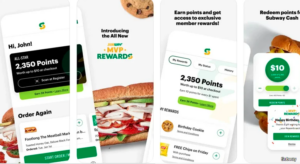
Managing a loyalty program manually is generally clunky, inefficient and prone to error.
Fortunately, digital solutions, such as restaurant CRM (Customer Relationship Management) systems and specialised loyalty software, make it easy to create and manage a successful loyalty program.
Leveraging these tools allows restaurants to streamline processes, track customer data, and provide a seamless experience for diners.
Overview of Restaurant CRM and Loyalty Software
Restaurant CRM and loyalty software play a crucial role in automating the management of loyalty programs and improving customer engagement.
These platforms allow restaurants to track customer behaviour, providing valuable insights that can inform marketing efforts and loyalty strategies.
- Centralised customer data: CRMs collect and store customer information in one place, making it easy to monitor interactions, preferences, and engagement with the loyalty program. This data can be used to personalise offers and create targeted promotions.
- Automated rewards tracking: Instead of using punch cards or manually tracking points, the software automates the process. Customers can track their progress through a mobile app or an online portal, reducing the burden on staff and enhancing the customer experience.
- Personalised marketing: Many CRM systems integrate with marketing tools, enabling restaurants to send personalised emails, text messages, or in-app notifications to customers based on their activity. For instance, you can automatically send a discount code to a customer who hasn’t visited in a while, encouraging them to return.
- Data analytics and insights: CRM and loyalty platforms provide detailed reports on the performance of your loyalty program. You can track metrics like customer retention, average spend per visit, and the popularity of specific rewards, allowing you to make data-driven decisions.
- Examples of software: Some popular loyalty and CRM platforms include Toast, Upserve, Punchh, and Lightspeed. Each offers features like rewards tracking, customer segmentation, and integration with point-of-sale (POS) systems to simplify program management.
Importance of Mobile-Friendly Programs
In the age of smartphones, mobile-friendly loyalty programs are essential for delivering a seamless customer experience.
Mobile apps, digital wallets, and customer engagement platforms provide an easy way for diners to participate in loyalty programs, track their rewards, and engage with your restaurant.
- Mobile apps: Offering a mobile app provides convenience and boosts participation. Apps also provide opportunities for push notifications, encouraging users to engage with the program . For example, you can send a message about a new menu item or an exclusive offer to app users.
- Digital wallets and contactless engagement: Integrating loyalty programs with digital wallets like Apple Pay or Google Wallet allows customers to store loyalty points directly on their smartphones. This contactless, easy-to-use option is particularly appealing in the post-pandemic era.
- Seamless integration with online ordering: By integrating your loyalty program with your online ordering system, you ensure that customers can earn points and redeem rewards even when they’re not dining in. This also allows you to capture more data on customer preferences.
- Personalised offers and engagement: Mobile apps and digital platforms allow restaurants to engage customers with personalised promotions based on their behaviour. For instance, you can offer a special discount to someone who has recently joined the loyalty program or send a reward to a customer after they hit a spending milestone.
- Gamification to boost engagement: Many digital loyalty platforms allow for gamification, such as badges, achievements, and leaderboards, which can make the experience more engaging. For example, customers might earn badges for trying new menu items or visiting the restaurant on special occasions, adding a fun element that encourages repeat visits.
The Benefits of Digital Solutions
- Convenience for customers: Mobile-friendly programs and apps make it easy for customers to track rewards and participate in loyalty programs on the go, increasing their engagement.
- Reduced administrative burden: Automating loyalty program management reduces the workload on restaurant staff, allowing them to focus on providing excellent service instead of manually tracking rewards.
- Real-time updates and promotions: With digital platforms, you can update your loyalty program or launch new promotions in real time. For example, you could introduce a “double points” day with the click of a button and notify customers through the app.
By adopting digital loyalty solutions and integrating mobile-friendly tools, restaurants can create a more streamlined, efficient, and engaging loyalty program. This not only benefits the customer experience but also enhances the restaurant’s ability to gather valuable data and drive business growth.
Conclusion
Well-designed restaurant loyalty programs can be powerful tools for driving customer retention, increasing revenue, and building long-term relationships with your diners.
By understanding your target audience, setting clear objectives, choosing rewards that resonate, and leveraging digital loyalty solutions, you can create a program that benefits both your customers and your business.
As competition in the restaurant industry continues to grow, having an effective loyalty program offers a key advantage in keeping your customers coming back for more.
For advice on picking the right platforms for your rewards program, reach out to NFS Hospitality.





